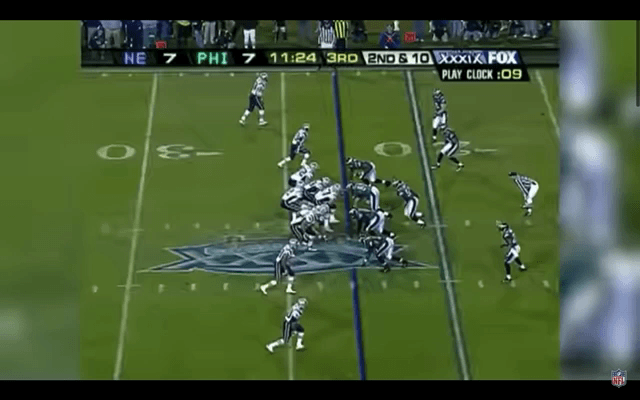This article was originally published on Feb. 4, 2021, days before Tampa Bay Buccaneers quarterback Tom Brady won his seventh Super Bowl title. It has been updated and republished following the news of Brady's retirement from the NFL.
Take yourself back to May 2017.
The aftershock from the 2017 NFL Draft is only just subsiding. No. 2 overall pick Mitchell Trubisky is the brand-new face of the Chicago Bears. The hopes and dreams of the Jacksonville Jaguars fan base now rest squarely on the shoulders of No. 4 overall pick Leonard Fournette. The Kansas City Chiefs, knowingly or unknowingly, have just started a new chapter of the NFL history book by trading up 17 spots and drafting a young quarterback named Patrick Mahomes.
Unfazed by the changing NFL landscape and blissfully unaware that Mahomes would soon be coming for his crown, a 39-year-old Tom Brady has decided to make waves of his own, telling ESPN’s Ian O’Connor that he intends to play until he is in his mid-40s — an idea once thought to be impossible. His goal is simple: to keep playing — and keep playing well enough — so that when all was said and done, he could stand alone with Michael Jordan in the Parthenon of sporting greats.
The then five-time Super Bowl champion told O'Connor, “I always said my mid-40s, and naturally that means around 45. If I get there and I still feel like I do today, I don't see why I wouldn't want to continue.”
Click here for more PFF tools:
Rankings & Projections | WR/CB Matchup Chart | NFL & NCAA Betting Dashboards | NFL Player Props Tool | NFL & NCAA Power Rankings
Best Bets Tool
In the five years since that interview, Brady not only played arguably the best football of his career, but he also redefined the physical limitations of age. He booked three trips to the Super Bowl, winning two of them, and outpaced the rest of the league in PFF passing grade (94.9), completions, passing yards and passing touchdowns. Now, five years later, it is officially all said and done, and there's not a soul on the planet who would deny his claim to G.O.A.T. status.
On Tuesday, Feb. 1, 2022, Brady officially announced his retirement from the NFL, pulling the curtains closed on a transcendent 22-year NFL career. The 44-year-old QB will bow out of the game as the NFL’s career passing yards and passing touchdown leader, a seven-time Super Bowl champion, a three-time NFL MVP, a five-time Super Bowl MVP, a six-time All-Pro and a 15-time Pro Bowl selection.
To mark Brady's monumental career, here is a look back at the highs and lows of his 10 championship games, which leans on the PFF grading and database of signature stats.
No. 1: Super Bowl 39 vs. Philadelphia Eagles
Date: Feb. 6, 2005
Location: Alltel Stadium, Jacksonville
Score: New England Patriots 24, Philadelphia Eagles 21
PFF grade: 81.4
| Tom Brady: PFF Stats for Super Bowl XXXIX | |
| PFF overall grade | 81.4 |
| PFF passing grade | 79.8 |
| Positively graded play rate | 28.6% |
| Negatively graded play rate | 8.6% |
| % dropbacks under pressure | 25.7% |
| Passer rating from a clean pocket | 116.8 |
| Passer rating under pressure | 89.6 |
| Passer rating vs. the blitz | 88.0 |
| Passer rating on first and second downs | 118.3 |
| Passer rating on deep throws | 39.6 |
It certainly wasn’t the most explosive of days for the New England passing offense, but the Patriots signal-caller still finished 23-of-33 for 236 yards, two touchdowns and zero interceptions to bring home his third Super Bowl in three tries.
Brady averaged 2.38 seconds from snap to pass, registering a 6.8-yard average depth of target as he went. In all, 62.3% of his passing yards came after the catch, which still stands as the highest rate he has ever recorded in a championship game.
The New England quarterback may have gone 0-for-3 on passes thrown 20 or more yards downfield, but he also didn’t record a single turnover-worthy play on the day. His lone big-time throw came on a 21-yard strike to Deion Branch, setting up the subsequent touchdown pass to edge-turned-tight end Mike Vrabel.

Branch earned Super Bowl MVP honors for his 11-catch, 133-yard performance. Five of his 12 total targets went for 15 or more receiving yards, while six of his 11 receptions moved the chains. He teamed up with Tom Brady to produce a 112.8 passer rating when targeted and left the game with an 85.6 PFF receiving grade, the highest grade ever earned by a Patriots receiver in a Super Bowl.
Exclusive content for premium subscribers

WANT TO KEEP READING?
Dominate Fantasy Football & Betting with AI-Powered Data & Tools Trusted By All 32 Teams
Already have a subscription? Log in




 © 2025 PFF - all rights reserved.
© 2025 PFF - all rights reserved.